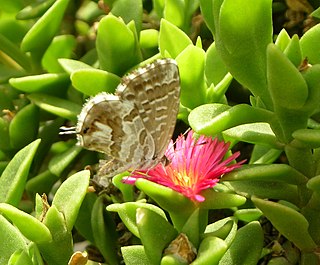 | |
| Names | |
|---|---|
| Preferred IUPAC name N-({4-[2-Chloro-4-(trifluoromethyl)phenoxy]-2-fluorophenyl}carbamoyl)-2,6-difluorobenzamide | |
| Identifiers | |
3D model (JSmol) | |
| ECHA InfoCard | 100.101.654 |
PubChem CID | |
| UNII | |
CompTox Dashboard (EPA) | |
| |
| |
| Properties | |
| C21H11ClF6N2O3 | |
| Molar mass | 488.77 g·mol−1 |
Except where otherwise noted, data are given for materials in their standard state (at 25 °C [77 °F], 100 kPa). | |
Flufenoxuron is an insecticide that belongs to the benzoylurea chitin synthesis inhibitor group, which also includes diflubenzuron, triflumuron, and lufenuron. [1]
Flufenoxuron is a white crystalline powder. It is insoluble in water, is not flammable, and is not an oxidizer.


